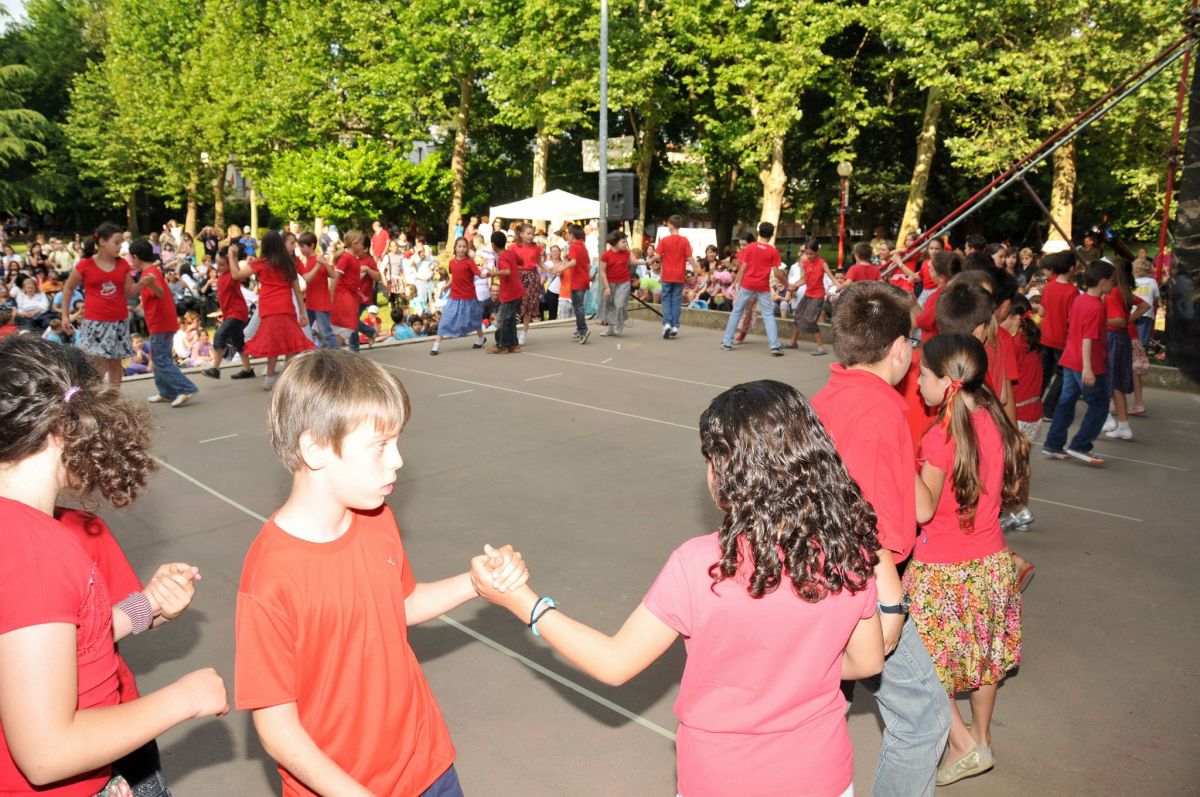Educational goals
The workshops that are made in schools are designed to achieve the following objectives:
General objectives:
The folk dances workhops have the intent to promote and improve the appropriate development of the personality of children, using embodiment as a preferred communication channel to stay healthy together, to accept themselves and others, to communicate feelings and emotions through movement and develop the ability to cooperate.
The folk dance, in fact, being an event choir, encourages a sense of unity and solidarity and allows to overcome shyness and egocentricity, and helps younger children to the awareness of one's identity. The strong cooperative aspects of folk dances, allows the creation of special synergy between the participants, facilitates the sharing of positive feelings and mutual acceptance that generates team spirit and is an effective tool for enhancing socialization.
General objectives:
The folk dances workhops have the intent to promote and improve the appropriate development of the personality of children, using embodiment as a preferred communication channel to stay healthy together, to accept themselves and others, to communicate feelings and emotions through movement and develop the ability to cooperate.
The folk dance, in fact, being an event choir, encourages a sense of unity and solidarity and allows to overcome shyness and egocentricity, and helps younger children to the awareness of one's identity. The strong cooperative aspects of folk dances, allows the creation of special synergy between the participants, facilitates the sharing of positive feelings and mutual acceptance that generates team spirit and is an effective tool for enhancing socialization.

Folk dances are an expression of cultural identity of the peoples of the world, they belong to history, get feed by music, exhibit costumes, embody traditional and modern styles of different cultures.
We believe that in a multicultural society in which we live, this proposal falls within the broader project of interculturalism in schools, which aims to foster an interaction that is not homogenizing of the diversity, providing a contribution that enriches the traditional school curriculum.
Specific objectives:
With dancing you can develop the dynamic and general coordination, segmental coordination, laterality and organization space-time, so you can consolidate and coordinate the static and dynamic movement patterns needed to control body and movements organization.
Exercising the movement in association with music, by virtue of the close link between the various parts of the dance and the corresponding parts of the melody, you can enhance the rhythmic feel of children.
By focusing on simple but important gestures, such as to join hands, the stand in a circle and at any time the insertion of a new child in the study group, the steps and figures, the expressivity, the enhancement of the body contact and male and female roles, the rhythm and motor coordination, the listening skills, the motor skills for the interpretation of the music, the concept of space, you can build an intercultural path designed to provide a basic knowledge of the first ways of playing and dancing, belonging to people with different customs and cultural traditions, the knowledge of which is a useful tool for the individual growth of everyone.
The dance, in this way, becomes a communication channel, close to the children and young people more than many others and is able to pass important content in a very exciting way.




